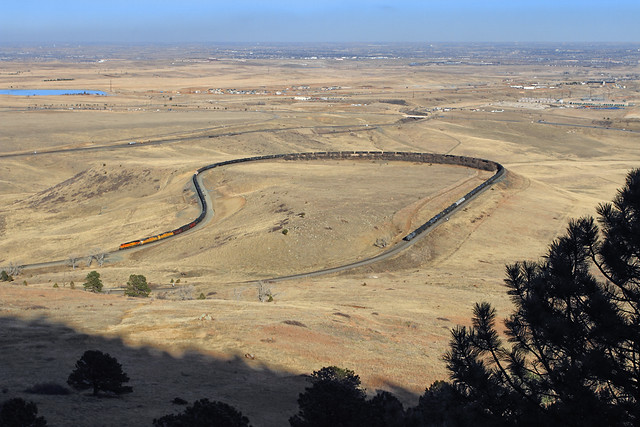Like all television programs, its difficult for producers and editors to decide what parts are essential and what parts are niche interest or broadly appealing but only tangent to the subject covered. How are you going to convey the subject, and whose narrative are you going to use to tell the story? Sometimes practicality limits the voices involved, and sometimes politics--public or merely human polity--limits what you can say. If you claim to represent the public interest, how far do you run down certain trails before you decide you're going too far from the audience?
I had to ask myself these questions given my own perceptions and concerns about a very difficult time for Denver, for the Ski Train, and for me. As detailed in the episode, Denver's Ski Train, an institution started by Rio Grand from the the 1940s and earlier died a hard and painful death in 2009, when Ansco decided it could no longer continue the operations. That much is in the episode.
It was a difficult time for Denver because in 2009, it was in the throes of the Great Recession. On what is no doubt a related decision, Ansco determined it could no longer support The Ski Train, which admittedly had become more a labor of love by Denver philanthropist Phillip Anschutz. For me, 2009 had me 4 years into a disability determination case in which I had gone deep into debt trying to keep my family housed, heated, and fed while struggling to do any meaningful work in the face of my gradually increasing physical disability. Those times have thankfully passed for all involved with varying extents of recovery, yet some questions of the past still remain unanswered.
The disposition of the fleet was for the most part to one operator, the Algoma Central for use in their Agawa Canyon train tour near Sault Ste Marie, Ontario in Canada. The possibility of relaunching the Ski Train as it was had gone forever. There would only be the future attempts to launch a new service. Attempts, plural, which were not covered in the episode and which I won't detail here because indisputable facts are hard to come by.
Nonetheless, the current incarnation, known as the Amtrak Winter Park Express is not the first effort, but by far the most successful. No doubt much is owed to Amtrak Conductor Brad Swartzwelter, who is in the episode below. I have chatted with personally and I hope you get to meet someday. He is a rare breed and one I hope will continue to ride the rails throughout Colorado.
I am glad the tradition of a ski train, whatever the name, still survives. The goal has always been so people can still avoid the traffic snarls and treacherous roads on their way to ski one of the best large ski areas ever created. And these people get to see the wonders of the Moffat Tunnel Route, one that I personally think among the finest in the world. It remains a part of the Scenic Line of the World.⚒




































